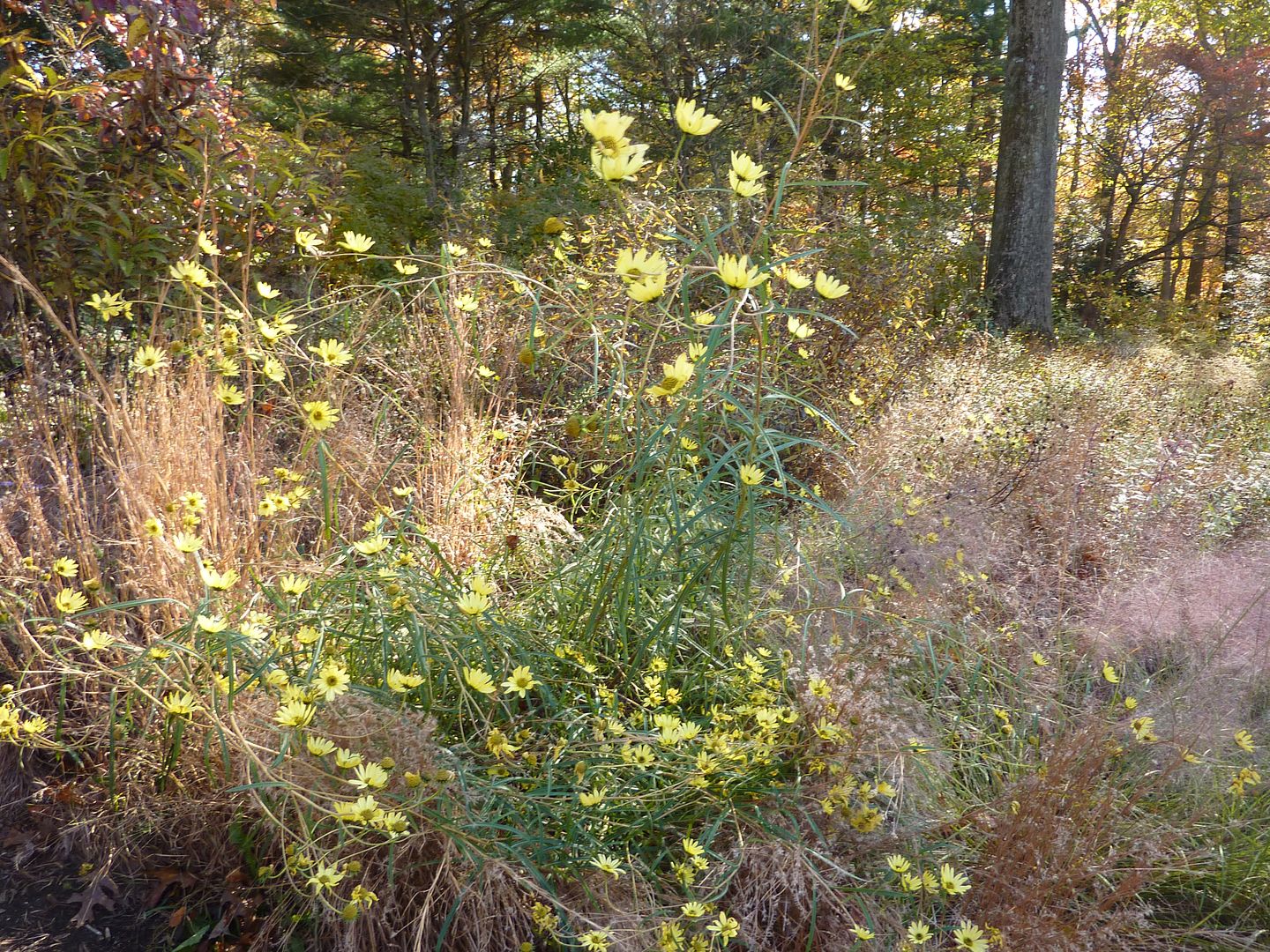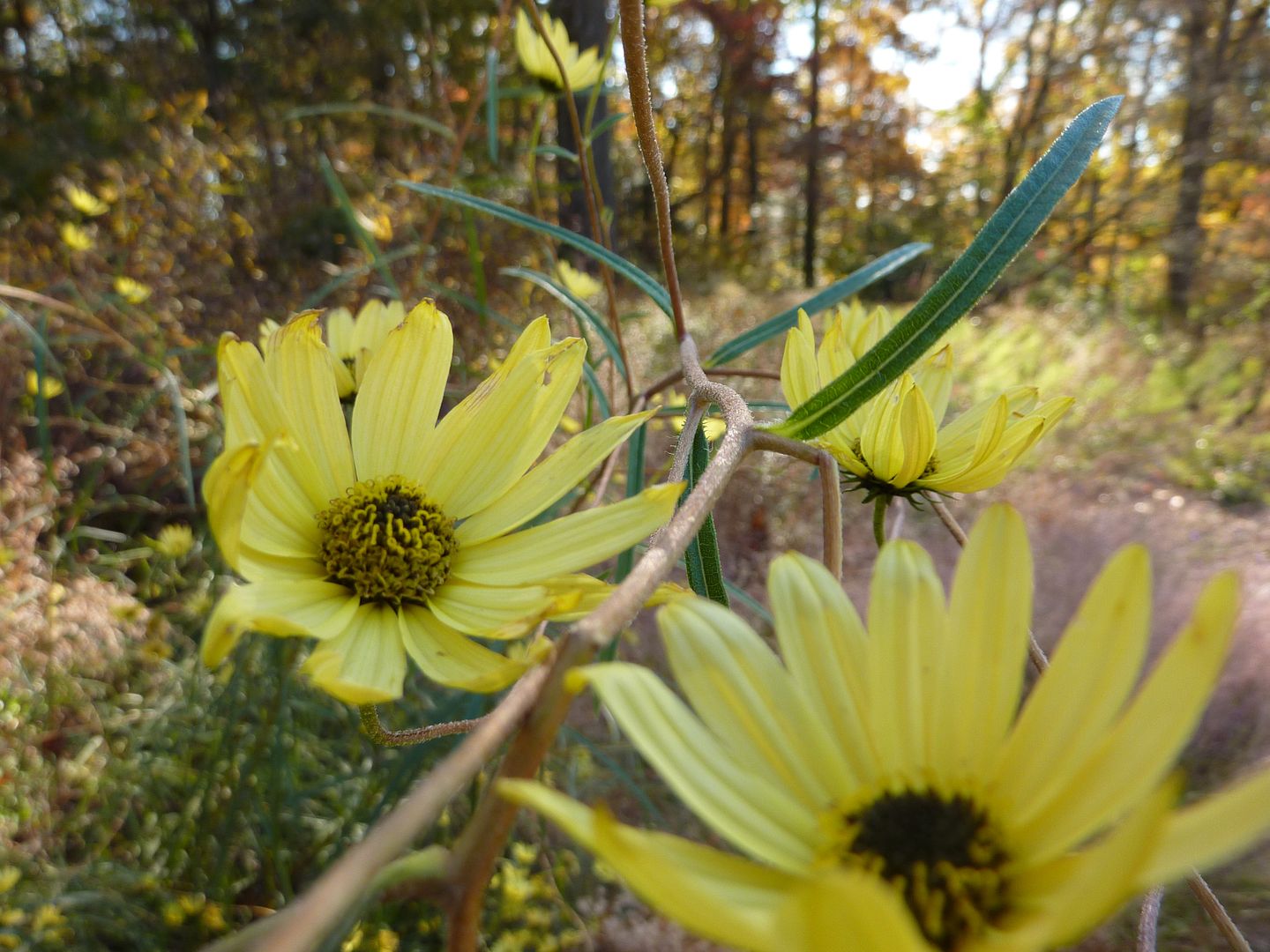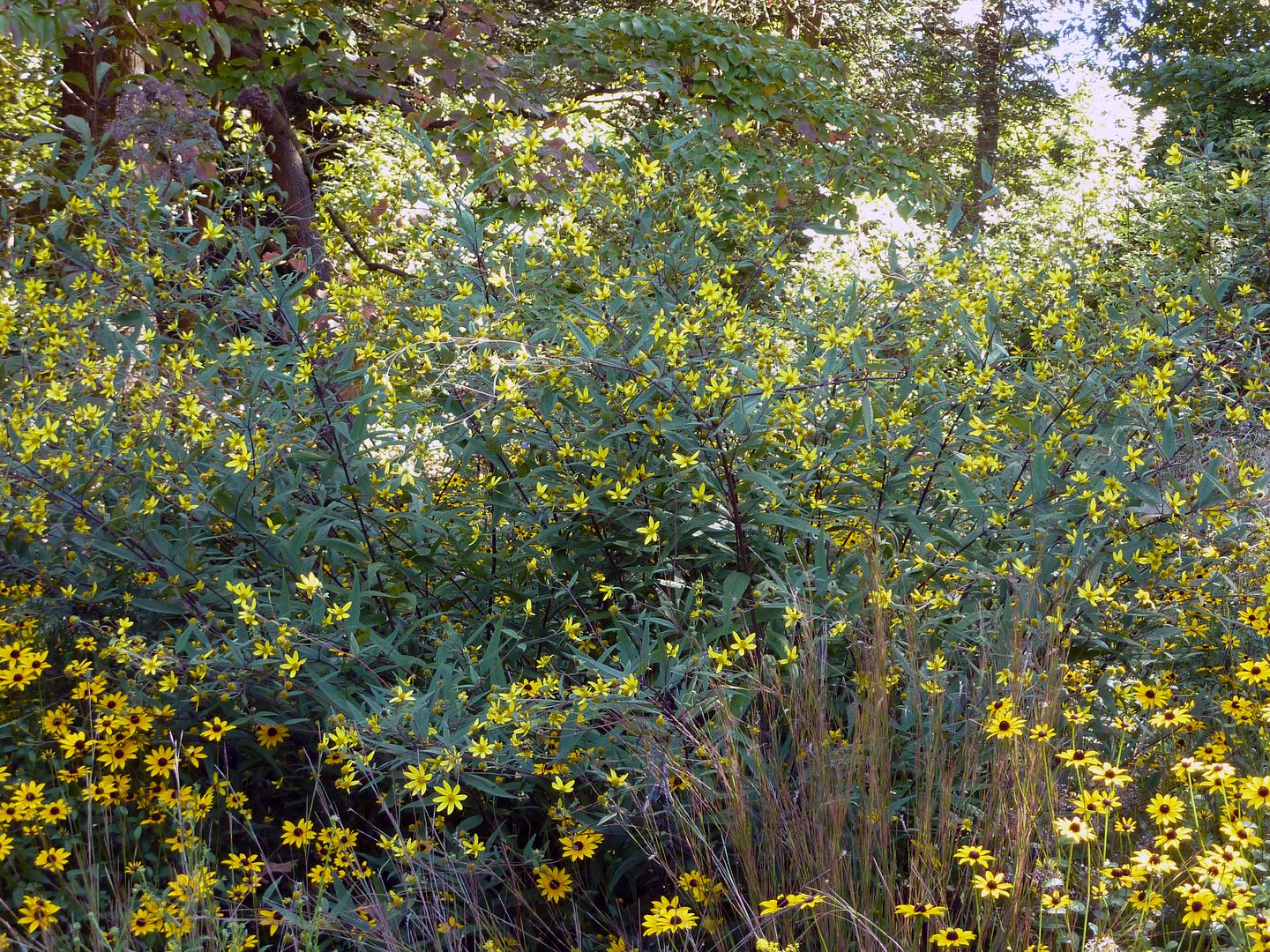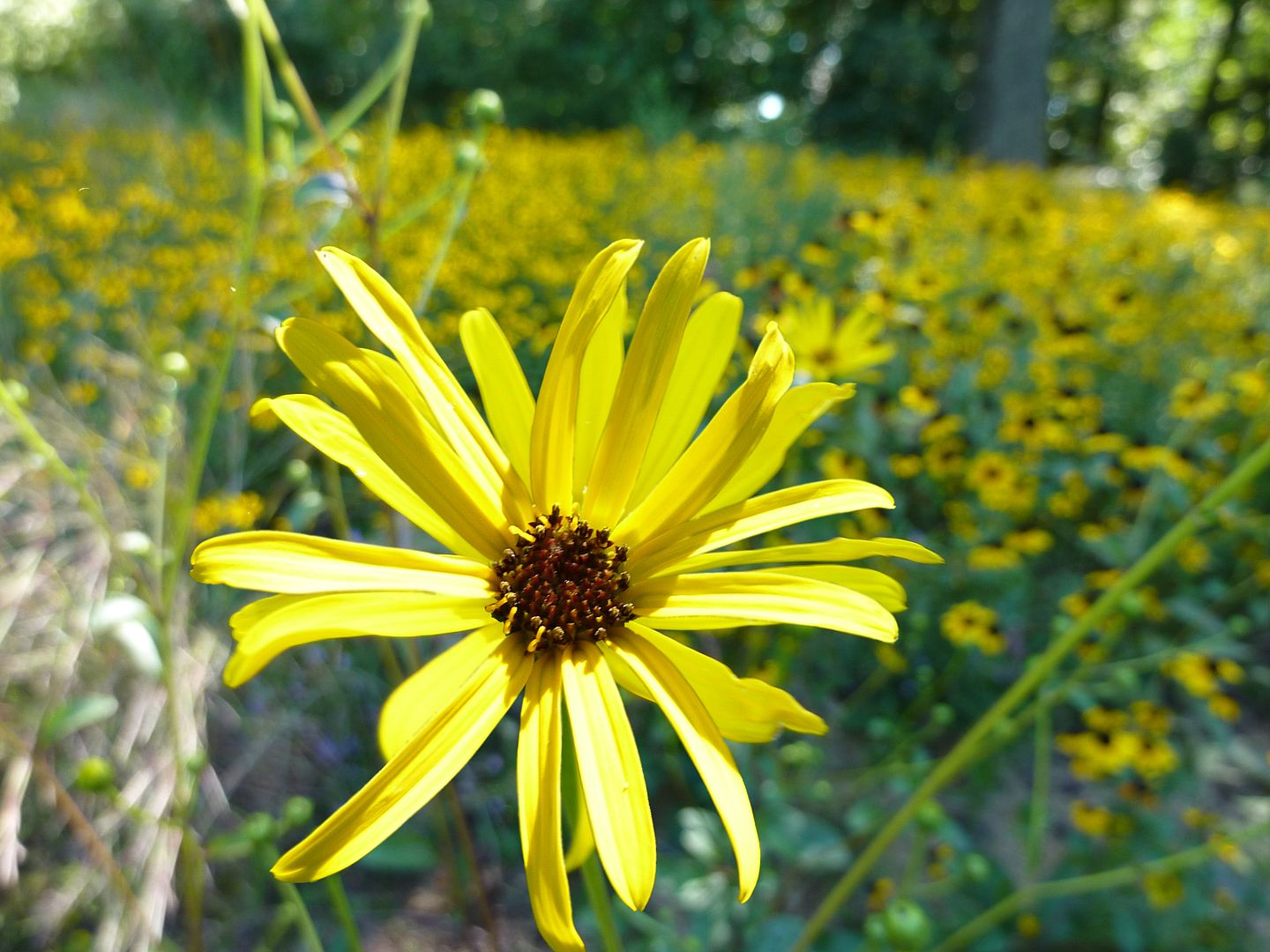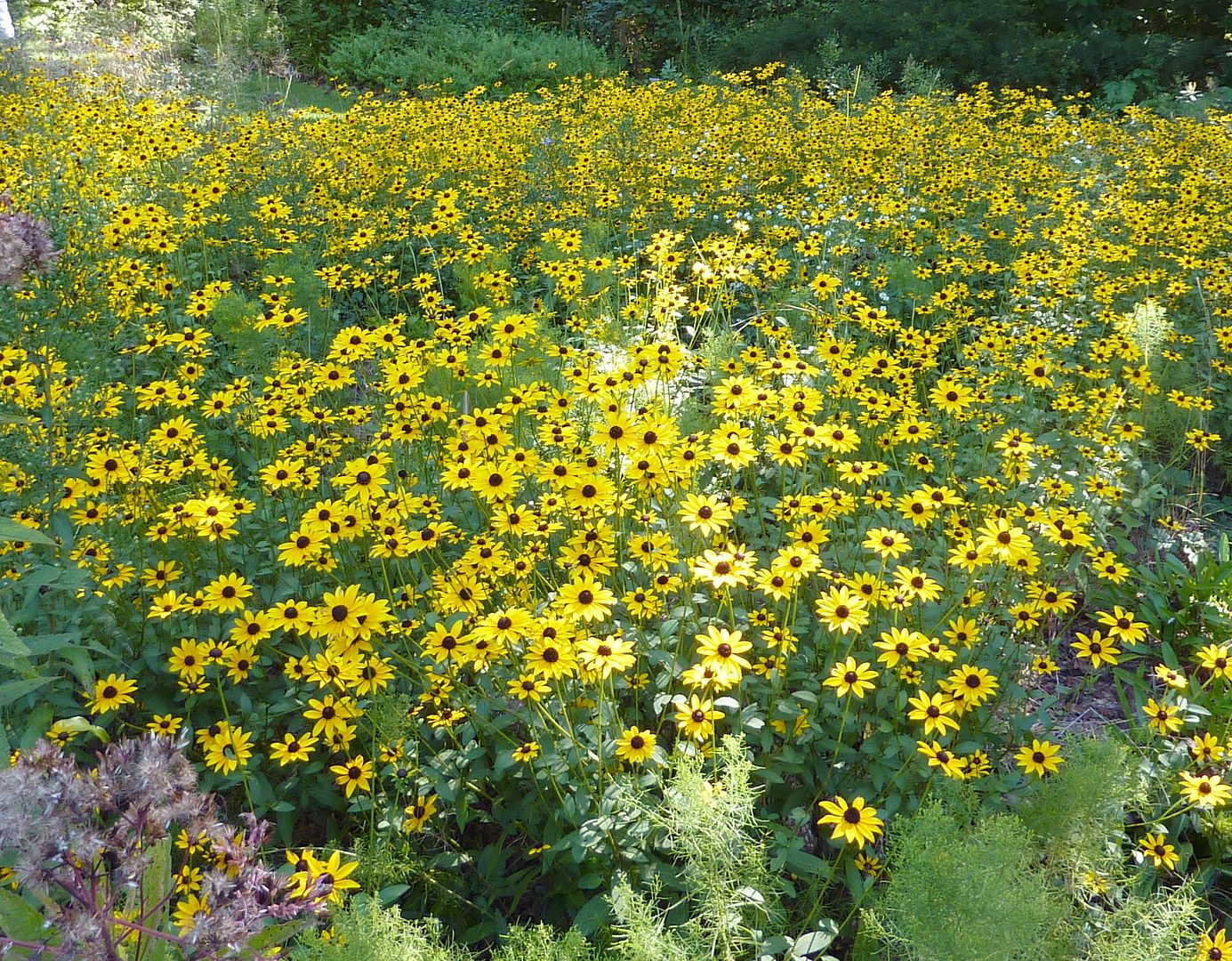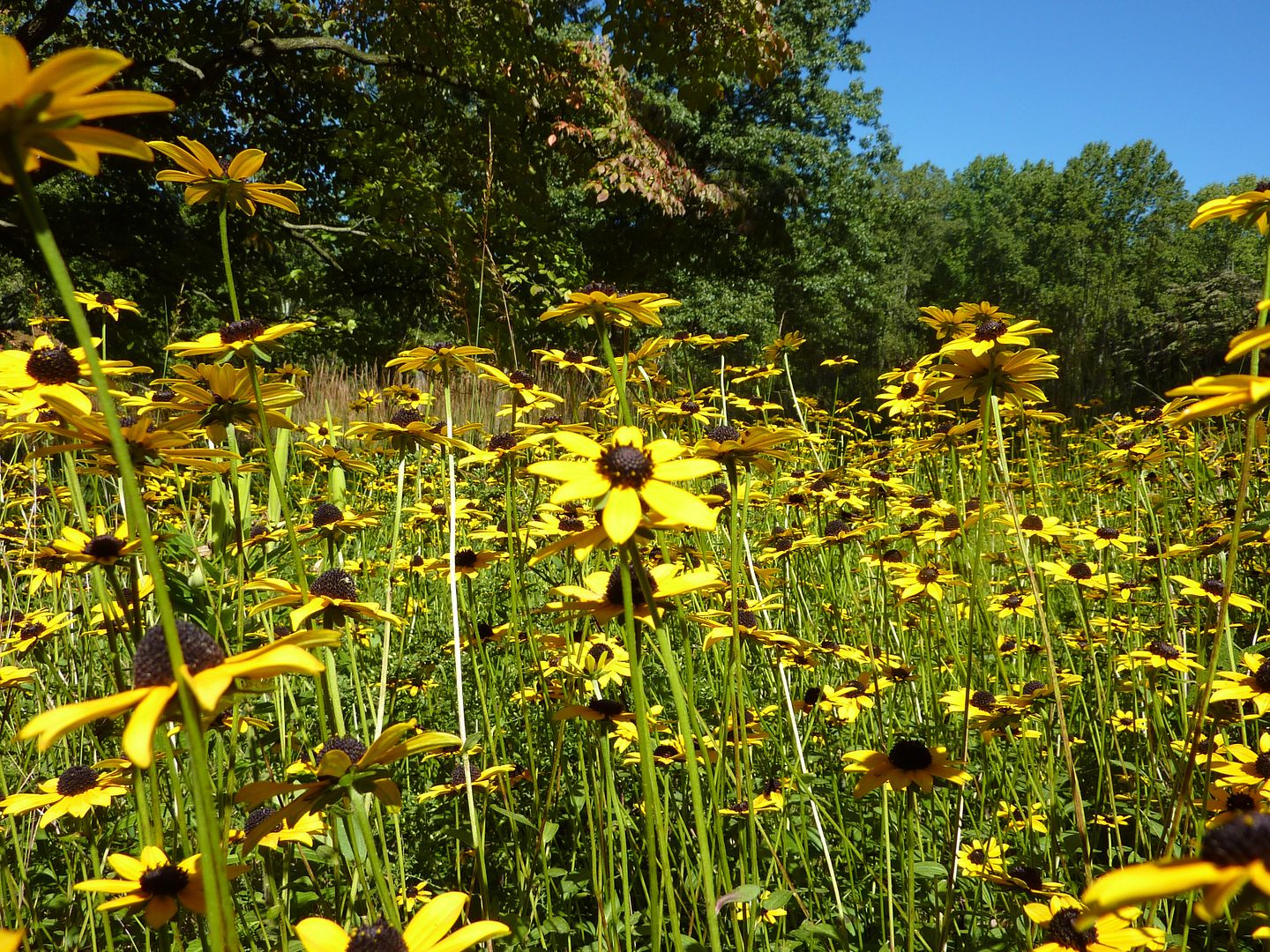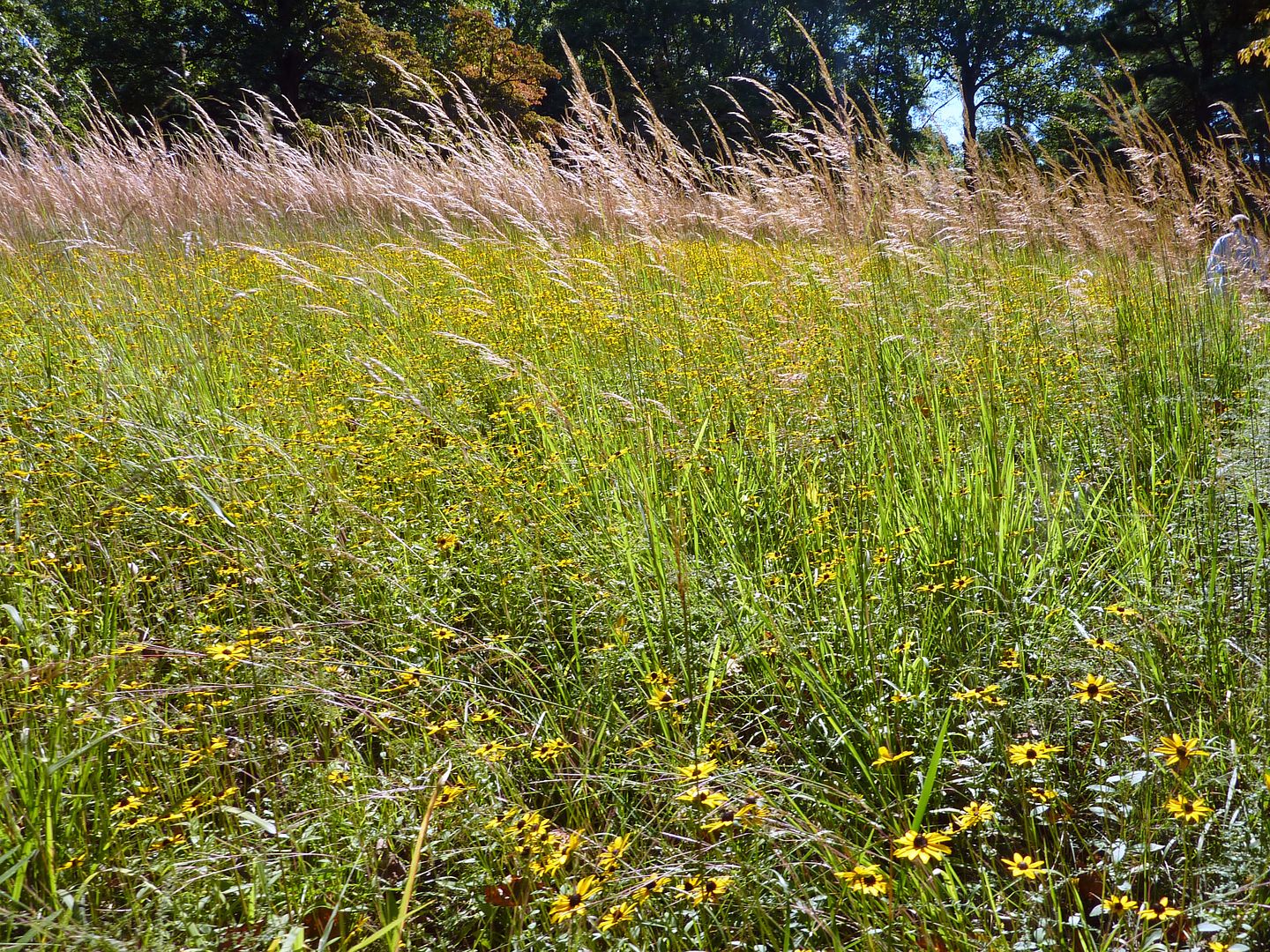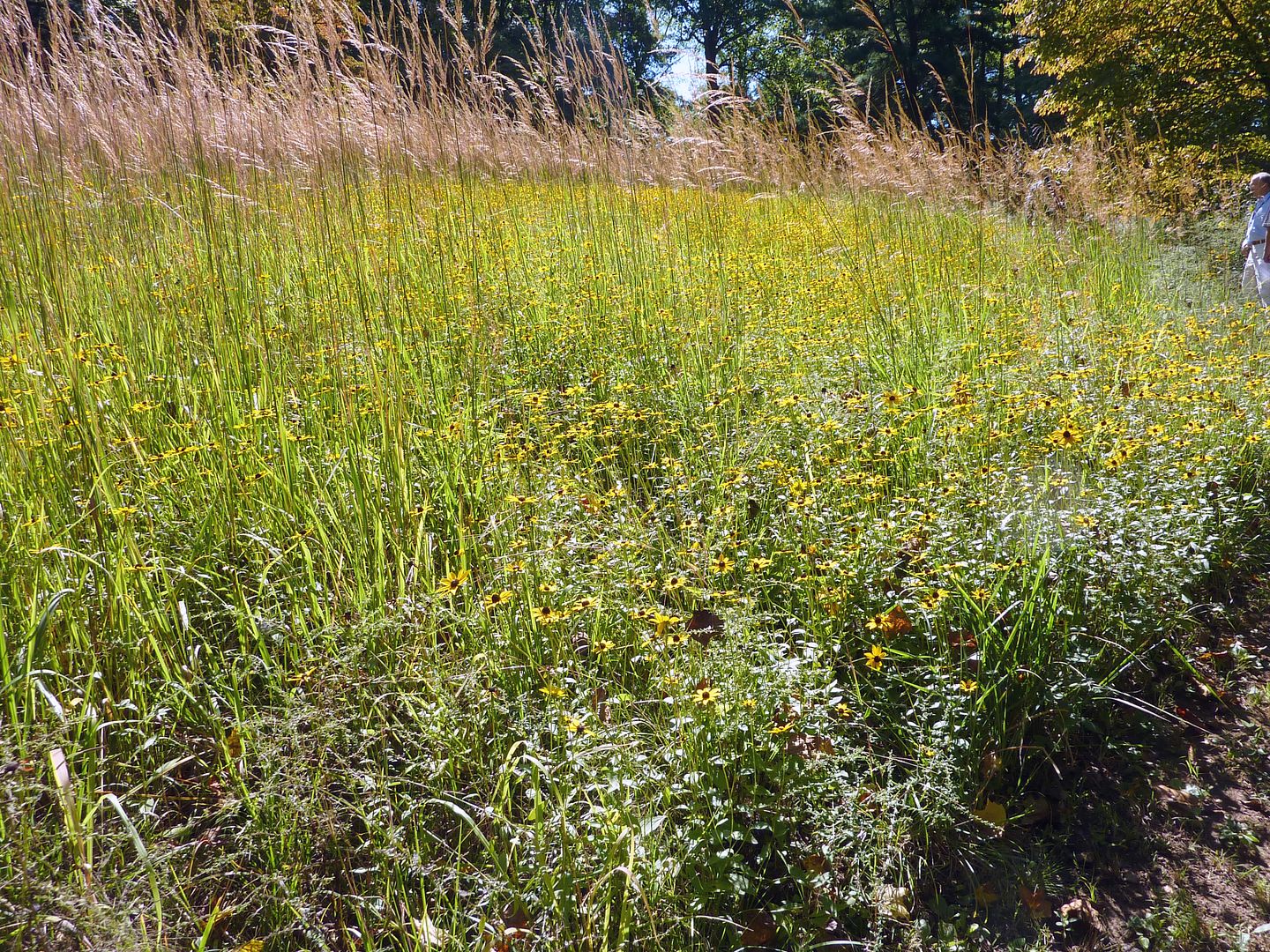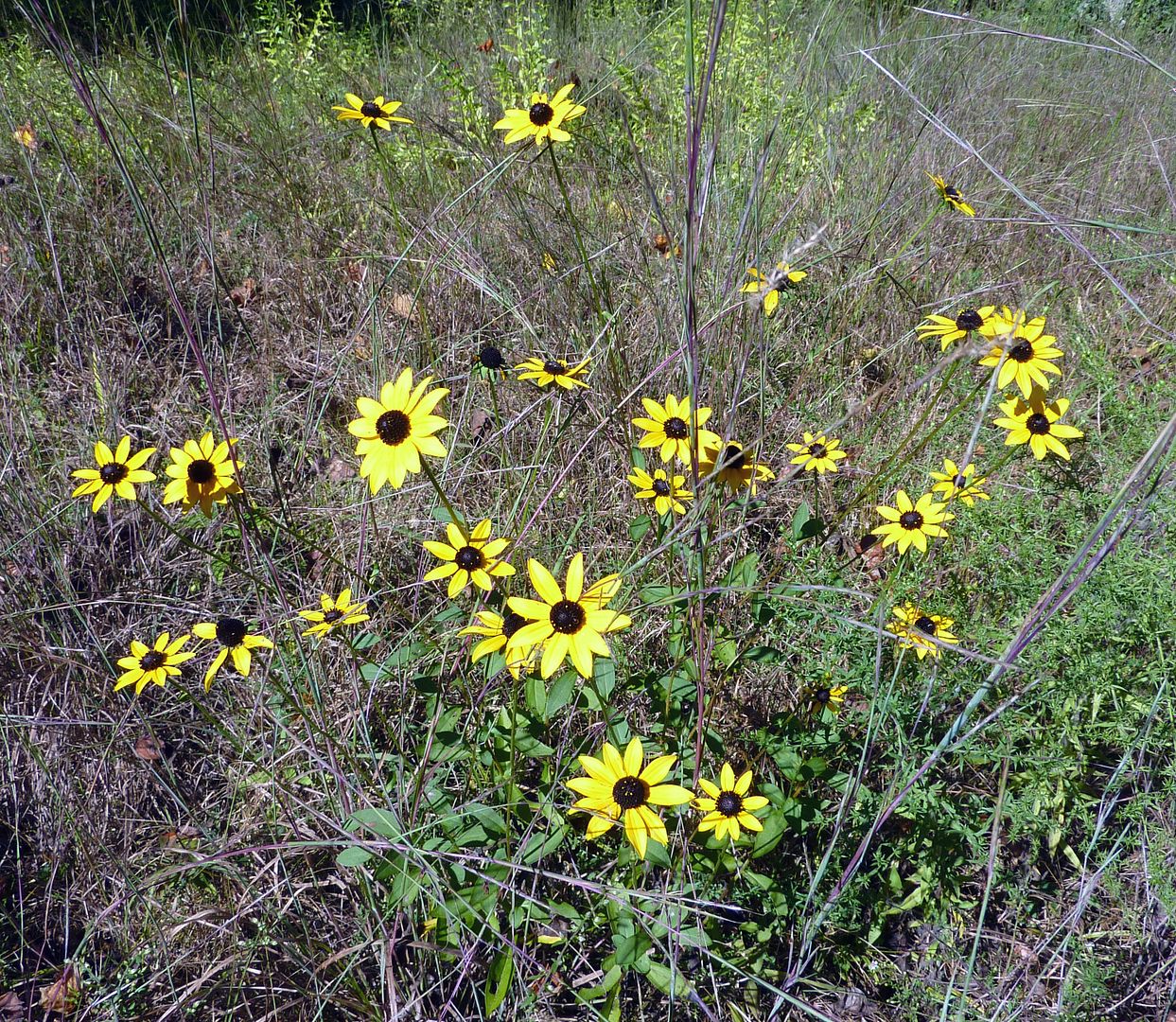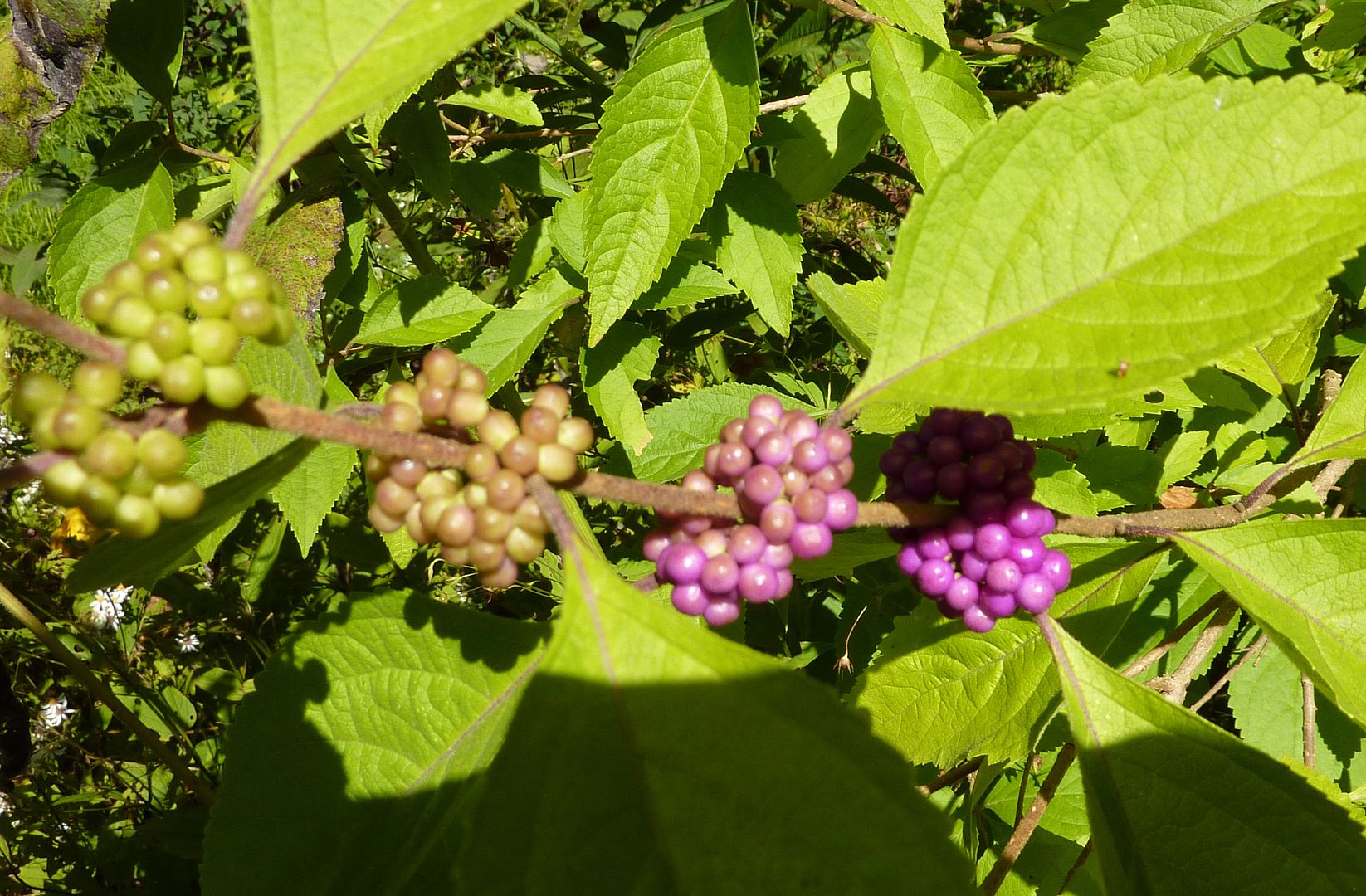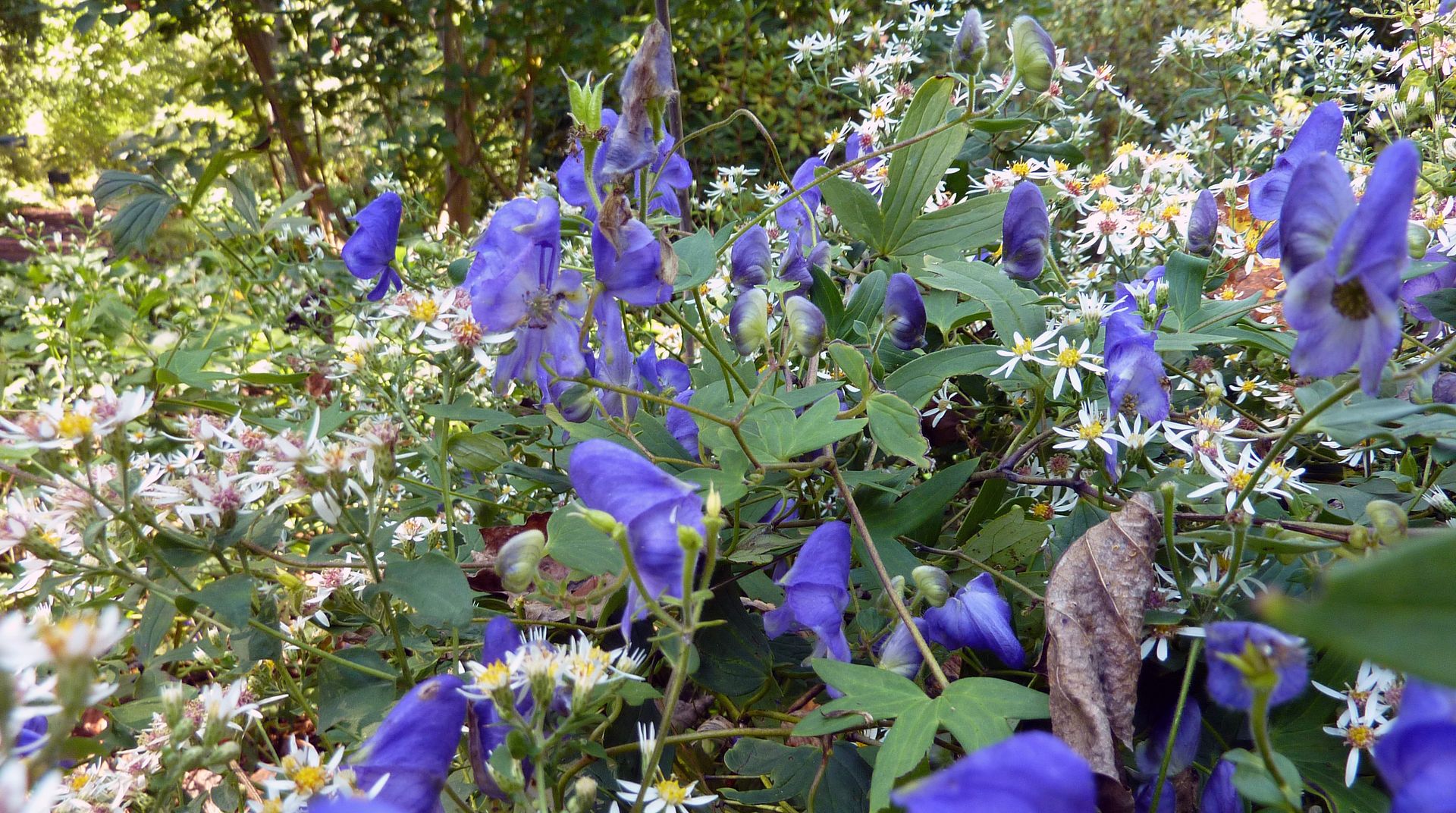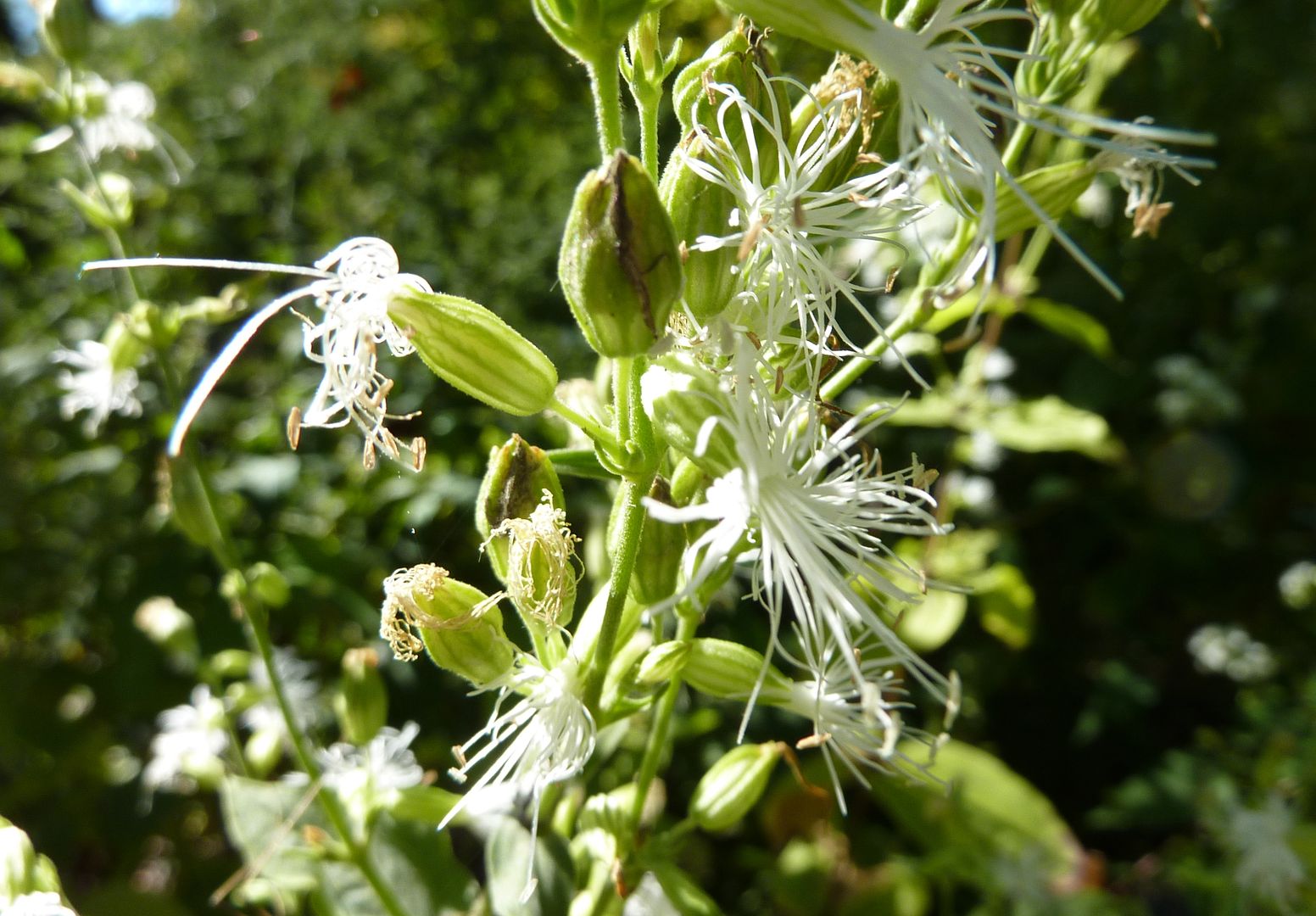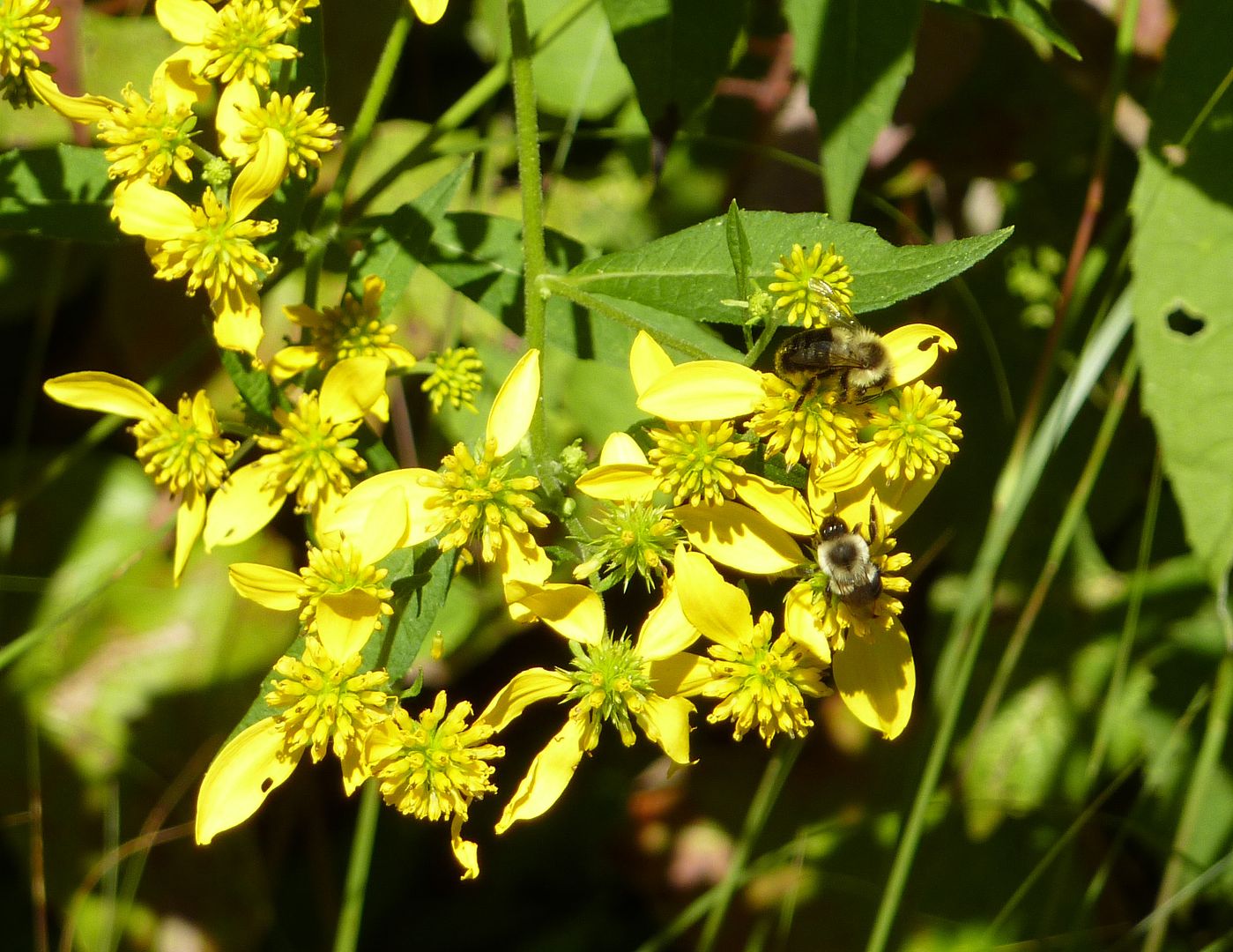Last year the at the Mt. Cuba Center they had this wonderful perennials sunflower that I just loved the moment I saw it. First off note that everything is pretty much dead in the photo except for it. That's because it was probably late September or October when it was taken.
This is Narrow-Leaf Sunflower, Helianthus angustifolius 'Mellow Yellow' which is also called Swamp Sunflower because it likes to grow in slightly wet conditions. The Narrow-Leaf name is fitting because pretty much all of the leaves are thin. 1cm is probably the thickest you'll find them on the plant. The 'Mellow Yellow' cultivar is nice because you get that yellow color without it being too flashy against the autumn sun. It's more of a fall color anyhow. The true species is much brighter and on par with what you see in pretty much every other Helianthus species around.
Also take one last quick glance at the background in both photos.
Here we are this year on the 15th of September. This was for their class on the Asteraceae plant Family, and that's the instructor, David Korbonits standing next to the same plant before it's flowered. I loved this plant when I saw it last year. This year so far it hasn't fallen over or done anything crazy. And as it so happens This Was The Plant They Gave Out For Taking The Course!!! And they asked me to take two of them home! I was Thrilled! (Also note the background and how much more abundant the Black-Eyed Susans are!)
First off Helianthus is a fair sized genus with lots of perennial sunflowers in it, but almost no one is selling them. The ones I do see getting sold are almost always followed by the warning "This plant likes to spread by rhizomes and is not suitable for small gardens." I hate this warning so much because I really don't get the idea of what they mean by a small garden. Compare for a moment how much fuller this plant is from the first photo at the top to the one just above. That's one year's difference and I fell like I can honestly live with that. But its kind of obvious that it's sending up a few dozen more stems.
Presumably the narrow leaves of the plant don't shade out what's growing under or through it. Whether it's growing up through something or falling over on them I don't see this plant shading anything out. I report in later years on if that's the case or not.
Another perennial sunflower that caught my eye was Small Wood Sunflower, Helianthus microcephalus, who's flowers are tiny but very numerous on the plant. Black-Eyed Susans are growing all around them to give you an idea of how small the flowers are. But this one sunflower plant was clearly the pollinator favorite. There were lots of bumblebees all around it. It's another one I'll have to look into. Currently I'm interested in Ox-Eyed Sunflower, Heliopsis helianthoides, which spreads more by seeds and not by rhizomes which presumably makes it easier to control.
Purple-Disk Sunflower, Helianthus atrorubens, was a shorter sunflower at around 4' tall. The stem was somewhat red or burgundy farther down the plant, but I'm told that's not true for all plants of this species. Even so at that height this might be a more garden appropriate species. The Purple comes from a slight illusion when looking at the flowers at the right angle with the right lighting, I otherwise didn't see it. (Also note the background.)
So last year there wasn't anywhere near this many Black-Eyed Susans growing and they've just completely filled in every nook free in the garden. Also I'm giving myself an A+ for this photo.
I forget if Rudbeckia fulgida or Rudbeckia hirta was the dominant species, but R. hirta is an annual/biannual while R. fulgida tends to be a perennial. I get so annoyed by seeing this many wonderful flowers and not seeing a single bee on them! I know I've seen tiny Sweat Bees and the occasional Honeybee work them but even in bulk like this, and in a massive native plant garden too almost nothing is pollinating them for long. Clearly it doesn't take much to initiate pollination because they're spreading so well, so maybe the temperature has to be right or something.
In parts of their meadow garden they grow like crazy even with the towering grasses hanging over them. All of the yellow in these two shots are Rudbeckia flowers!
Getting away from the main clumps there were a few coming up sporadically. Dave who manages the meadow garden mentioned they might be thinning them out next year. Assuming they're perennial they might as well pot them up and hand them out at the next years Wildflower Festival, though that might be a little boring.
American Beauty Berry, Callicarpa americana, were starting to ripen. Of all the berry plants that ripen now I'm told this is among the first the birds go after.
Southern Blue Monkshood, Aconitum uncinatum, was in bloom and it's always one I love to highlight. Don't get me wrong, it's a deadly poison that will kill you if you eat any part of it. But it's also the only plant that gives you this color in the shade at this time of the year. I've seen Monarchs on it too! Bees love it.
I forgot what this one was but it just looked neat.
I forgot this one too but apparently it's good at attracting Blister Beetles, which drip a powerful skin irritant that causes some god awful welts, soars, and discoloration. Not something you want to have in the garden ... at least not right up front. The bees were enjoying it though.
